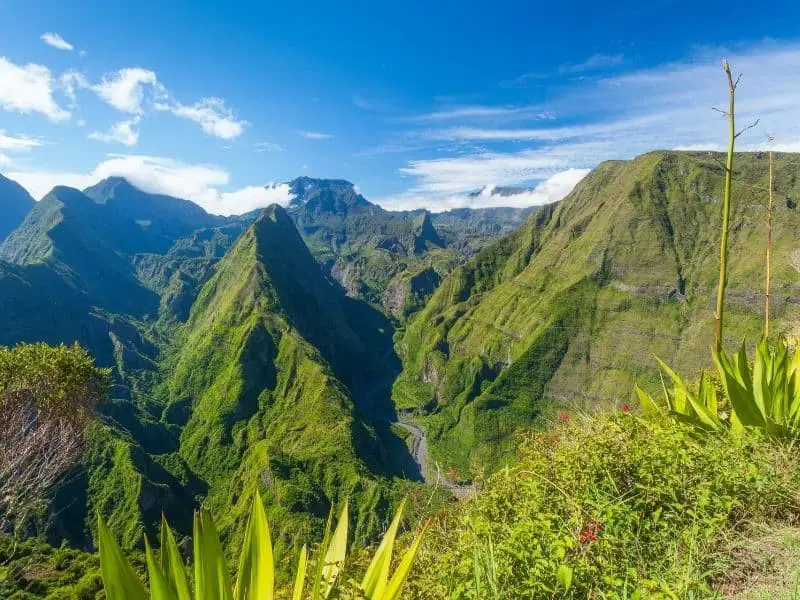If you’re looking to lower your caffeine consumption, but don’t want to give up on your morning cup of coffee entirely, you may be thinking that decaf coffee is your only option.
The good news is that is not your only option. You may not have heard of it before, but Laurina coffee beans can be a great alternative. This naturally low caffeine coffee bean provides a great flavor while providing a fraction of the caffeine you find in your regular Arabica beans.
In this article, we’re going to cover everything you need to know about Laurina coffee beans.
Let’s get started.
What is Laurina Coffee?
So I’ve already given you a little insight as to what this awesome coffee bean is, but there’s a lot more to the story.
Laurina coffee is a rare, low-caffeine coffee bean that originated from Réunion Island, near Madagascar, in the 18th century. This is a rare variety of Arabica bean that also goes by the name of Bourbon Pointu.
It contains only about a third to a half of the caffeine content of a typical Arabica coffee bean, making it a unique, and naturally occurring low caffeine coffee.
From Réunion Island, it spread to Asia, but in the 19th century, the popularity sharply dropped, leaving the coffee bean to almost go extinct.
This was due to the main thing that made it special, its low caffeine content. The caffeine in the coffee cherry acts as a natural insecticide, protecting the Coffea plants from insects. As the Laurina variety was so low in caffeine, it lacked this natural insecticide, making it vulnerable and low-yielding, so farmers naturally gave up on it.
In the early 2000s, Laurina coffee beans were brought back from the brink of extinction and can now be found in various countries around the world including Brazil, Nicaragua, Costa Rica, and Guatemala.
Where are Laurina coffee beans grown?
Part of what makes Laurina coffee so unique is where the coffee beans are grown.
As we’ve seen from premium beans like Jamaican Blue Mountain, the location, height above sea level, etc., can play a huge role in the production quality of the coffee cherry.
Original Laurina coffee beans are grown in Réunion, an Island of the Mascarene Islands. The island is located about 420 miles east of Madagascar.
These “original” Laurina coffee beans are grown at an altitude of 1400ft where they are handpicked, pulped, and then dried slowly. In other areas of the world, these are grown at varying altitudes and have varying drying processes, which also results in a varied quality.
For a real taste of Bourbon Pointu, make sure they’re made on Réunion Island.

Why is Laurina coffee so special?
Laurina beans have a number of things going for it that make it special.
The story of the origin of the beans, being one of the oldest varieties in the world, and then the near extinction, followed by the resurrection of this rare bean is intriguing for many.
Laurina coffee is possibly even more famous for its unique combination of low acidity, light taste, and lower caffeine content.
Most Arabica coffee beans have twice, or even three times, as much caffeine compared to Laurina beans. With many people watching what they consume in modern times, this means it’s risen in popularity among those looking to lowing their caffeine intake but aren’t looking to switch entirely to decaf.
The Bourbon Pointu plant is also very sensitive with low yields, even today, making it one of the rarest coffees on the planet.
Since Laurina is a rare coffee, it is also quite expensive to purchase.
When Starbucks sold one harvest at a few select locations in the US, it cost $16 per half a pound of coffee, and it was sold out in less than 24 hours.
What does Laurina coffee taste like?
The taste is one of the main things that make this variety of Arabica beans special.
Laurina coffee beans have a delicate taste that is unlike any other coffee.
They have a fruity taste that is reminiscent of oranges, tangerines, and sometimes even lychee, depending on the specific batch.
They could even be described as being quite tea-like, and have little to no bitterness.
Their sweet taste makes them a great choice for people who prefer a less bitter brew.
How much does Bourbon Pointu coffee beans cost?
Bourbon Pointu coffee beans are some of the most expensive in the world.
They can cost up to $500 per kilo when sold overseas. However, on Réunion Island, where they are grown, they cost only about $150 per kilo.
It is important to note that Réunion Island is a French department, and therefore falls under French travel rules. This means that you can only export 100g of coffee without having to declare it at customs.
Naturally low caffeine coffee: Laurina vs Arabica vs Robusta
Arabica and Robusta are two of the most common coffee bean varieties in the world, while Laurina is a rare variety of Arabica.
While they may seem quite similar, all three have some major differences that won’t leave you mistaking one for the other any time soon.
One of the biggest differences is their caffeine content.
| Robusta | 2.7% Caffeine |
| Arabica | 1.5% Caffeine |
| Laurina | 0.4-0.75% Caffeine |
Laurina has much less caffeine compared to the other two, making it a great natural low caffeine alternative while still being able to enjoy a freshly ground hot brew.
Arabica beans are the most common types of beans used for fresh grinding and in your classic coffee drinks like espresso or cappuccino.
Robusta beans on the other hand are much stronger and more bitter due to the high level of caffeine. These coffee beans are predominantly used in the production of instant coffee.
Another difference between these 3 coffee tree varieties is the yield produced per year.
Robusta tends to produce the most, approximately 35% more than Arabica per acre. This is also without considering that Robusta is considered a lowland coffee and Arabica a highland coffee.
This means that Robusta plants are grown in more accessible locations and tend to produce higher caffeine content, while Arabica beans are farmed at a much higher altitude.
Laurina produces a much smaller yield in comparison to both and makes it still one of the rarest coffee varieties in the world.
Laurina vs Decaf coffee
Although Laurina has a very small amount of caffeine in comparison to other coffees, it still contains more caffeine than decaffeinated coffee.
Laurina coffee contains on average 40% of the caffeine content of traditional Arabica beans, whereas decaffeinated coffee contains approximately 2mg (about 2% that of a regular cup of coffee).
Decaf coffee beans tend to taste about the same as they would prior to decaffeination. Depending on the decaffeinating process, they could taste slightly sourer, but in most cases, you won’t really be able to tell the difference.
Laurina beans on the other hand have an entirely unique fruity taste that is more reminiscent of tea than it is of your typical cup of coffee.
Final thoughts on Laurina coffee beans
Laurina coffee beans are a rare type of arabica bean that originated on Réunion Island.
These delicate and fruity-tasting beans have a naturally low caffeine content which makes them an excellent choice for those who want to reduce their intake or maintain healthy levels.
If you’re looking for something different in your morning cup of joe, maybe it’s time to try out some Laurina coffee.
